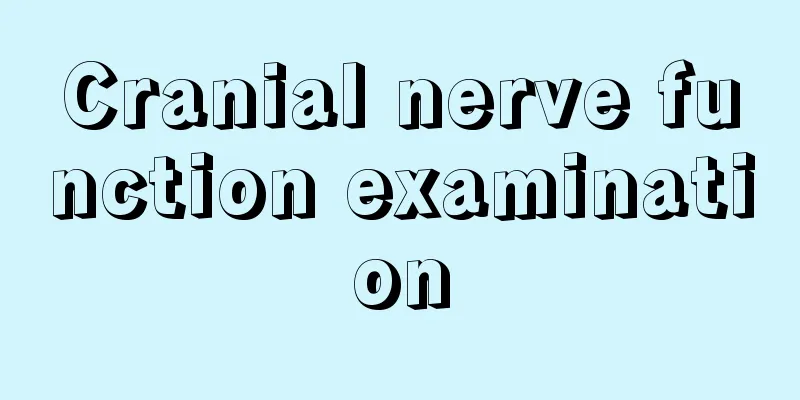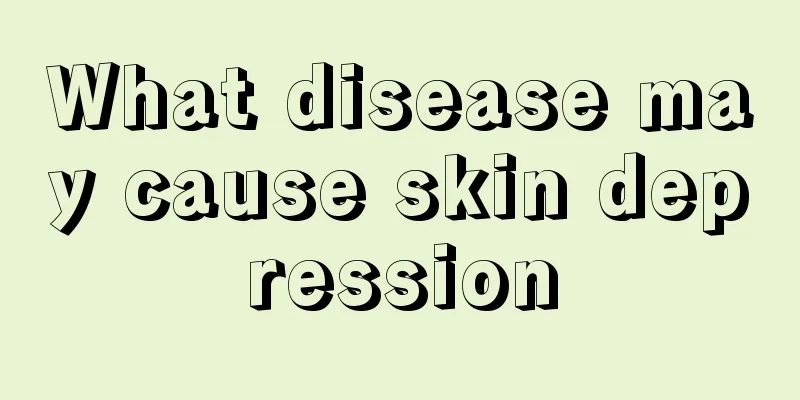Cranial nerve function examination

|
We all know that the human nervous system is very important to humans. Many actions in life require the control of the nervous system to be completed. The nervous system controls almost all human actions, so the nerve function must not be damaged. When human behavior is not controlled by consciousness, it is necessary to do some functional tests on the nervous system. So which nerve functions need to be checked? Normal value There are many items included in the cranial nerve examination, and only some of them are listed here, such as: auditory nerve examination: normal hearing, able to correctly distinguish the sounds heard, no eye tremor, eyes closed walking test, walking test, and positional nystagmus examination are all normal and can stand with eyes closed. Motor examination of the facial nerve: no asymmetry of the facial muscles during rest, speech, and facial expressions. For more details, please visit the various sub-examinations of cranial nerve examination. Clinical significance Abnormal results: The cranial nerve examination includes many items. The abnormal results of various examinations indicate lesions in different parts of the brain and different nerves. For details, please browse the various sub-examinations of the cranial nerve examination. People who need to be examined: patients with symptoms such as facial pain and hearing abnormalities. Precautions Unsuitable people: None Pre-examination contraindications: Maintain normal diet and rest time. Requirements during examination: Try to relax your facial muscles when the doctor is examining you, don't be too nervous, and actively cooperate with the doctor's work. Inspection process There are many items in cranial nerve examination, only a few are listed here: (1) Olfactory nerve examination: The sensitivity of the sense of smell can be understood through questioning. (2) Visual field examination: Visual field refers to the range that the patient can see when looking straight ahead without moving his eyes. (3) Trigeminal nerve examination: The trigeminal nerve has both motor and sensory functions. The examination includes facial sensation, motor function, corneal reflex and jaw reflex. (4) The facial nerve examination consists of two parts: movement and taste. (5) The auditory nerve examination includes hearing test and vestibular function test, which is used to determine whether there is any lesion in the cochlear and vestibular nerve. |
>>: How to prevent tuberculosis_How to prevent tuberculosis
Recommend
What are the treatments for melanoma?
Malignant melanoma originates from melanocytes. M...
How to completely eliminate cockroaches
The cockroach is one of the four urban pests. Alt...
Wisdom tooth root canal treatment
Many people have wisdom teeth. Some people have t...
What are the typical symptoms of advanced lung cancer? Several typical symptoms of advanced lung cancer
Lung cancer is one of the most terrifying disease...
How to remove nail polish?
Young girls often do their manicures. In addition...
What are the symptoms of nasopharyngeal carcinoma? What is the dietary treatment for nasopharyngeal carcinoma recurrence and lymph node metastasis?
Nasopharyngeal carcinoma brings a lot of pain to ...
Tips for fast weight loss in autumn
There has always been a saying among the people t...
Will getting angry cause bleeding in the stool? Can it be treated with diet therapy?
If your body gets inflamed in your daily life, yo...
Is it okay to cook in a stainless steel pot?
When cooking, we cannot ignore the selection of s...
Can river crabs be boiled
River crabs can be boiled or steamed. You can lea...
Can collagen remove spots?
In order to make their skin look smoother and mor...
What is the reason for the pain on the right side of the waist
Lower back pain on the right side is a problem th...
Reasons for pain on one side of the throat
A sore throat on one side is usually caused by a ...
What are the early symptoms of prostate cancer?
In the early stages of prostate cancer, most pros...
How to peel winter bamboo shoots
Winter bamboo shoots and spring bamboo shoots are...









